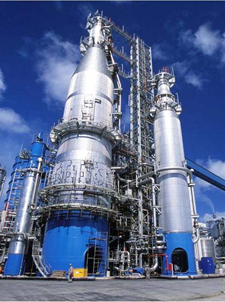Latest Advances in Kraft Pulping Explored at TAPPI 2013 PEERS Conference in Green Bay
 Print this article | Send to Colleague Print this article | Send to Colleague
 The 2013 TAPPI PEERS Conference in Green Bay, Wis., USA, September 15-18, focuses on advances and emerging developments in the kraft pulping and bleaching arena as well as the chemical recovery island. From the chemical pulp mill operating floor viewpoint, a series of sessions explore methods and approaches for improving and automating digester performance for a variety of grades and feedstock under a combination of conditions.
On Monday, September 16, Session S2 on Advances in Kraft Pulping, begins with a presentation on Nippon Paper’s (Japan) electrolytic oxidation method to produce polysulfide (PS) liquor from white liquor, and demonstrates how the PS liquor was integrated into the mill’s kraft pulping process to boost yield. The electrolytic process produces highly concentrated PS liquor at the anode and pure sodium hydroxide as well as hydrogen at the cathode. Nippon shows that the process is especially suitable for modified cooking, such as MCC or ITC in which the cooking liquor is split and charged into the multistage of a digester. PS liquor from the anode is added at the initial cooking stage with anthraquinone, and untreated white liquor is added at the additional stage. Sodium hydroxide derived from the cathode is used as the alkaline source for an oxygen delignification process instead of oxidized white liquor.
The second paper in Session S2 explores the optimization of batch and continuous cooking using alkali measurements and controls as well as kappa and residual alkali measurement-based feedback controls. As illustrated in this presentation, new developments in cooking—such as several alkali addition points and circulations—complicate process control and also mean new challenges for the measurement of pulp properties. At the same time, there are a lot of different disturbances present—wood age, density, chip size, white liquor concentration, etc. The paper introduces a control technology that goes beyond optimizing the temperature and alkali profile, and compares the actual measured profile to a "reference" profile, that allows conclusions about what is the original disturbance source (wood age, chip size, etc.) and makes a correcting action based on that. Multiple mill case studies are reviewed in this presentation.
The third presentation in Session S2 looks at factors important for continuous digester chip column movement and presents the results from a digester conversion at the BillerudKorsnäs Gävle mill in Sweden. As explained in this paper, most continuous digesters are 30 to 50 years old and in many cases production has been increased by 50% to 100%. In some cases, the kappa target and/or wood specie has also been changed. These digesters no longer operate under the conditions they originally were designed for. To produce pulp, the chip column must be moving, and this has become one of the most important tasks for the operator. As illustrated by the Gävle mill case study, the chip column movement in a two-vessel hydraulic digester can be improved by converting the unit to a two-vessel steam/liquor phase digester.
Other sessions at 2013 PEERS examine several additional breakthrough enhancements to chemical pulp production, including chlorine dioxide bleaching and oxygen and ozone reinforced bleaching technologies.
More information on the 2013 PEERS Conference, and more information on the International Bioenergy and Bioproducts Conference being held September 18-20 in conjunction with PEERS, are available online.
   
|
|

